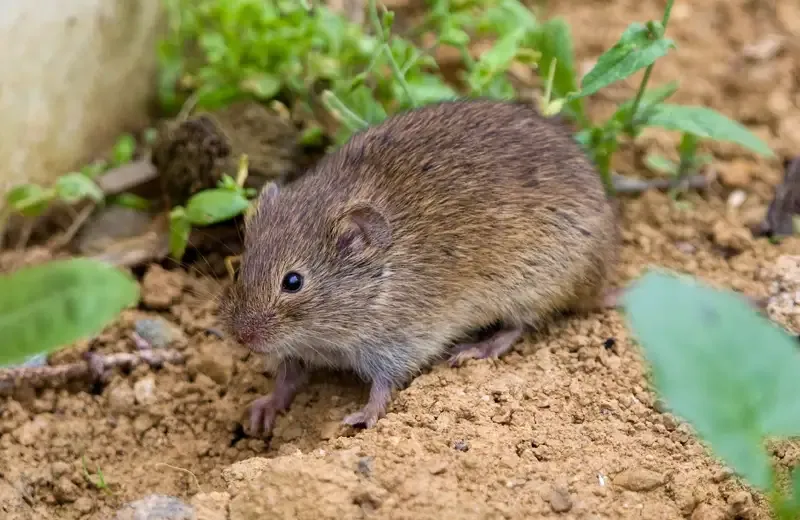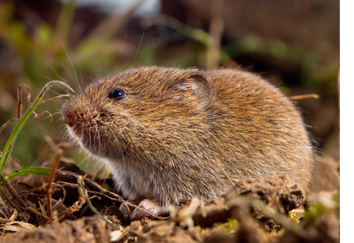Specialist Strategies for Vole Control and Avoidance
Specialist Strategies for Vole Control and Avoidance
Blog Article
Comprehensive Guide to Efficient Vole Parasite Control: Problem Recognition and Treatment Methods
In the world of reliable pest control, vole problems position an unique obstacle that requires a critical strategy. These little rats, usually incorrect for computer mice, can damage yards, yards, and plants if left unattended. Determining the signs of vole presence and carrying out targeted treatment approaches are essential components of a successful insect administration plan. By discovering the nuances of vole behavior, recognizing vital indications of problem, and assessing a series of control choices, one can develop an extensive approach to fight these elusive pests.
Comprehending Vole Behavior
Vole behavior is characterized by their delving routines and quick recreation rates, making them a tough pest to manage efficiently. Their quick reproductive rate further makes complex control initiatives, with women qualified of generating multiple clutters in a single year, each containing several spawn.
Comprehending vole actions is vital for reliable parasite control approaches. By identifying their burrow places, monitoring feeding locations, and applying targeted control methods, such as trapping or habitat alteration, vole problems can be managed successfully.
Indicators of Vole Invasion

Avoidance Techniques
Applying effective avoidance approaches is important in reducing vole infestations and protecting plants from their damaging feeding habits. To protect against vole infestations, it is vital to start by eliminating prospective food sources and sanctuary.
Regularly examining the building for indicators of vole activity, such as runways and tunnel openings, is important for very early detection and punctual activity. If vole task is believed, take into consideration using catches or repellents strategically put near their pathways.
Non-Lethal Control Techniques
To efficiently take care of vole populaces while prioritizing humane approaches, non-lethal control techniques offer functional solutions for decreasing vole damages in landscapes and yards. One effective technique is making use of physical obstacles such as equipment fabric or wire mesh to secure at risk plants. These obstacles can be buried at the very least 12 inches deep and curved at a 90-degree angle to protect against voles from burrowing below. Furthermore, environment alteration can discourage voles by reducing their preferred food resources and concealing areas. Preserving a well-mowed lawn, getting rid of particles, and maintaining greenery trimmed can make the environment less attractive to voles.

Lethal Control Options
One reliable method for attending to vole infestations in landscapes and yards involves the critical use dangerous control options. When confronted with a serious vole invasion that non-lethal techniques have actually stopped working to contain, implementing deadly control steps becomes crucial. One typically utilized lethal control option is the usage of breeze catches. These catches are designed to promptly and humanely kill voles upon activation, making them a popular selection for numerous gardeners and landscaping companies. To boost the performance of breeze traps, it is recommended to position them in areas where vole activity is high, such as along paths or near burrow entryways. An additional lethal control option is the utilization of poisonous baits particularly created to target voles. These lures contain poisonous substance that is ingested by the voles, resulting in their eventual death. However, caution must be worked out when making use of hazardous baits to protect against harm to non-target pets or animals. In general, when using deadly control options, it is important to do so properly and in accordance with local regulations to successfully take care of vole infestations.
Verdict
To conclude, efficient vole bug control requires a comprehensive understanding of vole actions, recognition of signs of invasion, implementation of prevention strategies, and utilization of both dangerous and non-lethal control approaches. By incorporating these techniques, individuals can effectively take care of vole populaces and safeguard their home from damage. It is very important to attend to vole infestations immediately to stop additional concerns and reduce the effect on the surrounding atmosphere.
Given the intricate tunnel systems and quick reproduction prices particular of voles, acknowledging the indications of vole infestation becomes vital in reliable bug control. One of the primary signs of vole visibility is the visibility of surface area paths or routes in yard or snow, generally about 1-2 inches wide, created as voles travel in between their burrows and food resources.To effectively handle vole populaces while focusing on gentle approaches, non-lethal control methods provide functional remedies for minimizing vole damages in yards and landscapes.One effective method for attending to vole problems in gardens and landscapes includes the strategic usage of lethal control choices. vole pest control.In final thought, efficient vole pest control needs a comprehensive understanding of vole behavior, recognition of signs of invasion, execution of avoidance methods, and application of both dangerous and non-lethal control approaches
Report this page